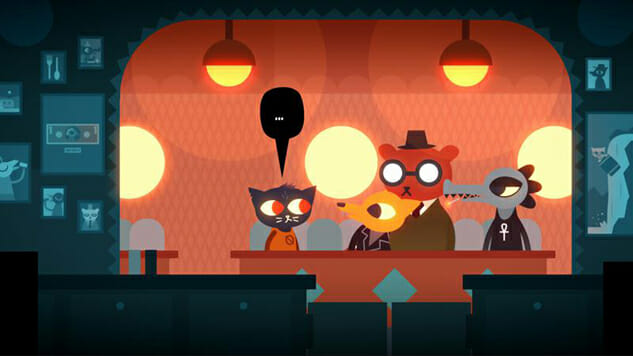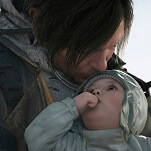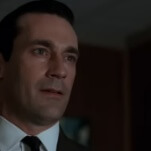The Human Cost of the Millennial Generation Gap in Night in the Woods

The tension between millennials and the older generations is reaching a fever pitch. As seen in the generational divide of recent landmark political decisions like Brexit and the Trump presidency, clear battle lines are being drawn. Recently, Generation Y author and business consultant Simon Sinek even went viral last December with a video that addressed “the millennial question; Striking the elusive balance between Good Guy Dad and a neighbor screaming, “Get off my lawn, you kids!”, Sinek’s diatribe sandwiches a few truthful observations between a litany of condescending Ad Hominem jabs, anecdotal generalizations, and uncited (highly debatable) research, all while painting millennials as the sole victims of technological addiction (they’re not). Yet millions (many millennials themselves) took his sentiments as gospel (the alt right, for one, ate up the language of “participation trophies”). But rebuttals from other millennials often rang out with the same red flags of a personal vendetta masquerading as social commentary, only in the language they know best: memes and tweets.
There is an astounding and ever-expanding body of thinkpieces, research, and news segments on why baby boomers and millennials can’t see eye-to-eye. But if you’re a millennial, here’s the TL; DR—and if you’re a baby boomer, here’s the synopsis: boomers criticize the new generation for being lazy, technology-enslaved, self-entitled idealists who can’t grow up, while millennials struggle to support themselves in one of the worst economies in decades after the baby boomers squandered their prosperity. At the end of the day, millennials and boomers are just two polar points of the steep line charting out our economic decline after a boon, as the generation born during an upswing clashes with the generation graduating from college thousands in debt during a recession. Yet while the battle wages on, and the media reports on every new component of this divide (whether economic, demographic, political, or professional), many portrayals gloss over one of the most key factors: the personal cost of progress.
Confession: I’ve been a millennial since 1992. I like videogames and frequent Twitter. Most egregiously (according to Sinek), I’ve checked my iPhone before a meeting. My workplace is the internet—and yes, that has made me bad at the real world in a lot of ways (you win this round, Sinek). But here’s an even more insidious confession we millennials are reticent to admit: most of us were born to and raised by baby boomers, spending much of our lives in their households. Some may even still be on their health insurance plans (thanks, Obama. Also save us, Obama). Because, in contrast to much of the literature on it, this generational war isn’t just waged in thinkpieces, on the job, or through marketing strategies. In reality, this age-based clash of cultures and ideals plays out in the most intimate of spaces: the home. Fascinatingly, the people on the other end of this particular divide are not distant strangers, but rather your own children and parents.
Infinite Fall’s Night in the Woods poignantly and sympathetically captures the human scale of the widening millennial vs baby boomer gap. Setting aside stats and diatribes, it explores the messy, awkward nature of a paradigm shift that lives under the same roof, shares the same blood, and harbors the same deep familial love and frustration for one another. Mae, a twenty-year old recent college dropout, returns to her decaying Rust Belt home to live with her economically-strapped but well-meaning parents. In the game, the political could not get more personal, as the rapidly shifting financial landscape of America puts an unspoken strain on their otherwise beautifully supportive relationship. As both a family and community, these polar demographics struggle to contend with the fact that this was not the future they had been promised. Often, they direct their rage at the nearest scapegoat, conflating harsh societal forces for family members they can yell at.
The friction is apparent from the game’s opening sequence. Mae arrives at the Possum Springs train station, returning to her hometown because of her inability to cope with the unspecific anxiety of a generation that feels both economically and socially forgotten. While never explicitly stated, we later find out that Mae suffers from dissociative mental health issues, (again, to Sinek’s credit) stemming from the feeling of being adrift in an impermanent technological world she no longer recognizes, a world that seems artificial and unreal—like suddenly waking up inside the uncanny valley of a virtual reality. Seeking a return to her more tethered past, she instead finds herself at a train station, stranded. Her parents forgot to pick her up. After making her own way home through an old childhood playground that feels similarly estranged, she tries to brush off her parents’ misstep. Yet, an underlying sense of abandonment seeps into Mae’s annoyed and incensed jokes, taking it as further evidence that a true return home is not possible. Perhaps not even fully understanding herself why it cuts so deep, Mae must face the fact that the world that made her feel safe and protected is gone forever. Her parents are not coming to pick her up. No one is coming to save her. She is stranded in this alternate reality of childhood, alone at a train station that can only take her to new destinations of uncertainty.








































